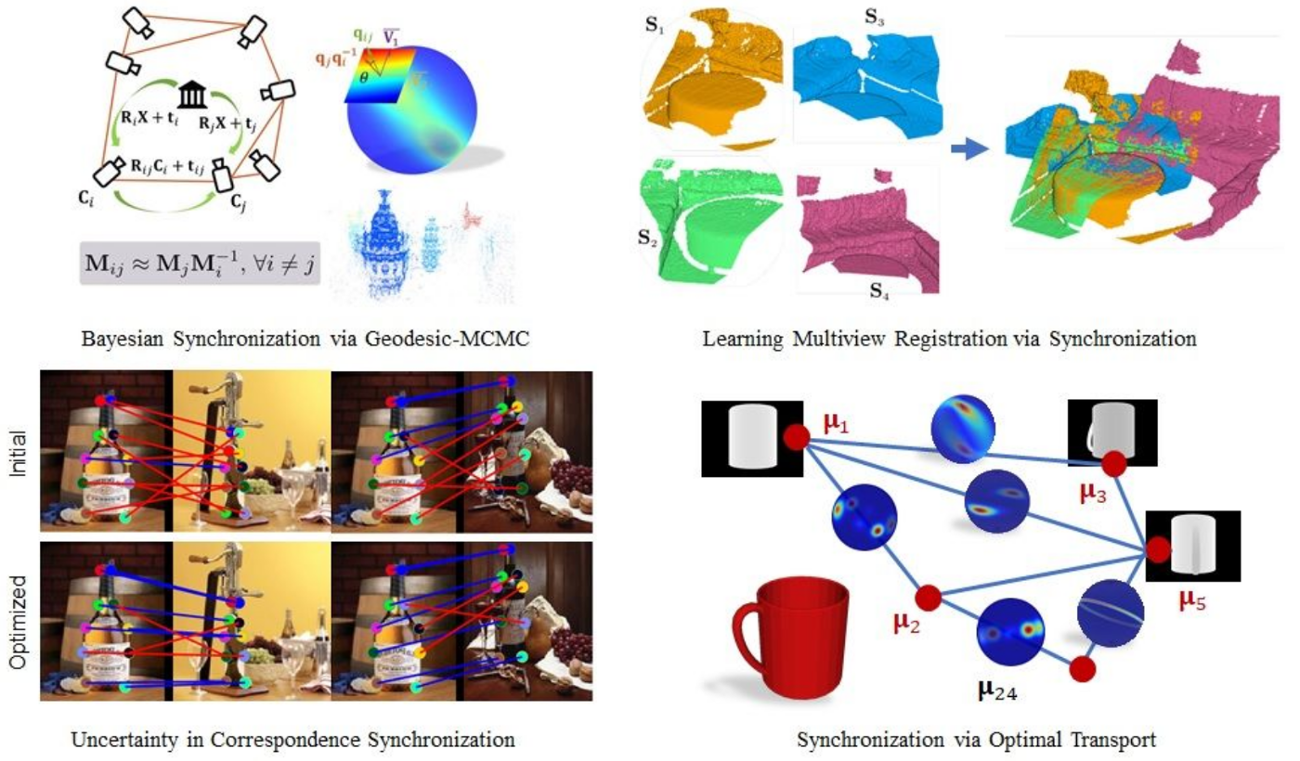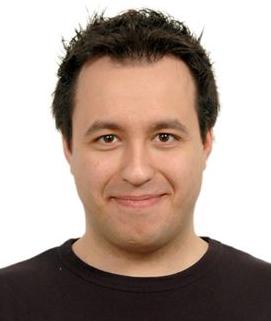Invited Talk by Dr. Tolga Birdal
Date: Wednesday, September 2, 2020
Time: 10:00 - 12:00
A Geometric Take on Probabilistic Synchronization

Abstract:
Tolga Birdal will present an unconventional sequel of works bringing fresh perspectives to the 2D/3D multiview alignment, correspondence estimation and optimization problems. In this peculiar talk, Tolga interrogates the mono-optimality in vision problems and argues for an interpolatant between optimization and statistical inference that characterize the space and geometry of solutions for a specific downstream task. Within the scope, the problem of particular interest is synchronization, operation to unison. Tolga will start off with the nuts and bolts on probability and inference in geometric domains such as the Riemannian tempered stochastic gradient MCMC methods. He will then apply different variations of this algorithm to various group valued non-Euclidean parameters (rotations, poses and permutations) belonging to the highly non-convex problem of synchronization within an undirected graph. Subsequently, he will leap into non-parametric methods and show how in the most general case, cyclic-consistency of distributions on maps can be understood as a sum of optimal transportations in the Lie group of the parameters. In the remainder of the talk, he will discuss how some of these algorithms can be used in contemporary deep neural networks as well as alternative twists to synchronize: multi-scan registration without registration.Biography:
Tolga Birdal is a Postdoctoral Research Fellow at Stanford University. He carries his research within the Geometric Computing Group of Prof. Leonidas Guibas. Previously, Tolga has defended his PhD? thesis entitled “Geometric Methods for 3D Reconstruction from Large Point Clouds” at the Computer Vision Group, Chair for Computer Aided Medical Procedures, Technical University of Munich led by Prof. Nassir Navab. He was also a Doktorand at Siemens AG under supervision of Dr. Slobodan Ilic. Tolga completed his Bachelors as an Electronics Engineer at Sabanci University in 2008. In his subsequent postgraduate programme, he studied Computational Science and Engineering at Technical University of Munich. In continuation to his Master's thesis on “3D Deformable Surface Recovery Using RGBD Cameras”, he focused his research and development on large object detection, pose estimation and reconstruction using point clouds. Tolga is awarded both Ernst von Siemens Scholarship and EMVA Young Professional Award 2016 for his PhD? work. He has several publications at the well respected venues such as NeurIPS?, CVPR, ICCV, ECCV, IROS, ICASSP and 3DV. Aside from his academic life, Tolga is a serial entrepreneur. He has co-founded multiple companies including Befunky, a widely used web based image editing platform. For further information, visit tbirdal.me, https://profiles.stanford.edu/tolga-birdal, http://campar.in.tum.de/Main/TolgaBirdal.| WebEventForm | |
|---|---|
| Title: | Invited Talk by Dr. Tolga Birdal: A Geometric Take on Probabilistic Synchronization |
| Date: | 2 September 2020 |
| Location: | Online |
| Abstract: | Tolga Birdal will present an unconventional sequel of works bringing fresh perspectives to the 2D/3D multiview alignment, correspondence estimation and optimization problems. In this peculiar talk, Tolga interrogates the mono-optimality in vision problems and argues for an interpolatant between optimization and statistical inference that characterize the space and geometry of solutions for a specific downstream task. Within the scope, the problem of particular interest is synchronization, operation to unison. Tolga will start off with the nuts and bolts on probability and inference in geometric domains such as the Riemannian tempered stochastic gradient MCMC methods. He will then apply different variations of this algorithm to various group valued non-Euclidean parameters (rotations, poses and permutations) belonging to the highly non-convex problem of synchronization within an undirected graph. Subsequently, he will leap into non-parametric methods and show how in the most general case, cyclic-consistency of distributions on maps can be understood as a sum of optimal transportations in the Lie group of the parameters. In the remainder of the talk, he will discuss how some of these algorithms can be used in contemporary deep neural networks as well as alternative twists to synchronize: multi-scan registration without registration. Findings relevant to this project are published in NeurIPS? 2018, CVPR 2019 & CVPR 2020 as well as the CVPR 2020 tutorial on synchronization: http://synchinvision.github.io/. The methods are particularly suited to improve SFM (structure from motion) and SLAM (simultaneous localization and mapping) pipelines that are essential for computer vision and robotics. |
| Imageurl: |  |
| Type: | Hot |
| Videourl: | |
| Conferencelink: | |
